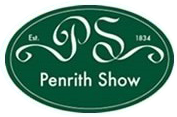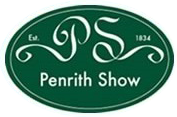Our 2020 President - Mr Thomas John Barr
7th February 2020
It is the very great honour of being asked to be President of Penrith show in 2020 which provides the opportunity to look back over the past 75 years as I recall the many changes in livestock farming in this part of the world. As the son of a veterinary surgeon and a local farmer’s daughter I have been steeped in the local agricultural community all my life – and what a wonderfully fulfilling environment to be raised and to work.
Before the dominance of super markets, there were at least three local dairy farms that cooled, bottled and delivered milk to the doorstep every day. Meat from local farms was available in numerous local butchers shops.
Dairy cows were tied by the neck in winter and held in generally long byres, up to as many as 80 in one, I recall. The cow accommodation was kept scrupulously clean due to the army of farm workers in those days which meant such tasks were easily accomplished.
In the late 1950s and early 1960s the seismic change in dairy cow management saw the introduction of loose housing, the gradual demise of the byre system and milk churns making way for loose housing, milking parlours and bulk tanks. This demanded the wholesale dehorning of all dairy cattle - it was tough physical work for the local veterinary surgeons and the cattle farmers. Then, of course all the young stock had to be done likewise and the procedure of humanely disbudding calves was introduced and is still carried out today. In recent years the dairy cows have dwindled in number and sheep have become more prevalent.
On the disease front tuberculosis was the first cattle disease to be eliminated, yes eliminated from the Cumbrian cattle due to the government, the veterinary surgeons and the farmers working together to test all the cattle, eliminate the positive reactors and establish TB free herds, and that was in the 1940s and 1950s!!
The next government sponsored campaign was to eradicate brucellosis, that insidious infectious cause of cattle to terminate pregnancy 1-2 months prematurely resulting in calf losses and compromised milk yields. The 1960s saw all female cattle being blood sampled every sixty days and positive animals culled until the herds were clear. Of course there also have been the sporadic foot and mouth disasters. Sheep too have their disease problems the latest to their list being maedi visna and schmallenberg virus.
Livestock farmers in this community work day and night all the year round, dealing with all weather, government schemes, legislation, ever changing regulations - not to mention animal disease and husbandry problems. While farmers have to be progressive they demonstrate unwavering stoicism, tenacity and commitment through all adversity seldom seen in other walks of life. It is remarkable, therefore, that they continue to annually make the effort to take a little time out to organise impressive local agricultural shows of which Penrith is one driven to such a high standard.
Thank you to all those involved for the hard graft that goes into creating such a splendid showcase of entertainment, country crafts, skills and livestock farming and also to those who come through the gate to support it.
Thomas John Barr




